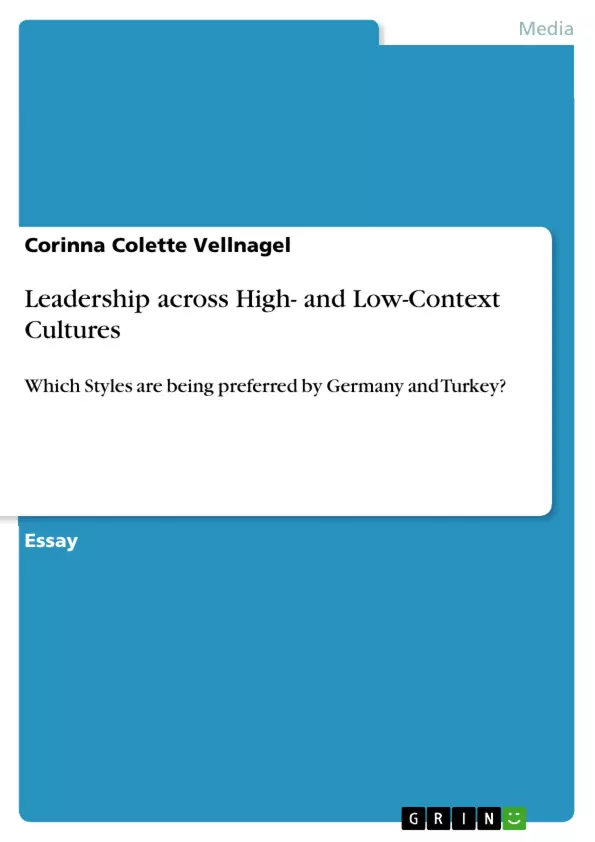When you think of great leaders, names like Nelson Mandela, Martin Luther King, Bill Gates, Barack Obama or Gordon Brown may come up. But what makes a leader a good leader? Being a good leader requires a lot of things and therefore not everybody can be a successful leader. “Leaders can be born, elected, or trained and groomed; they can seize power or have leadership trust upon them” (Lewis: 2006, p.104). They can be democratic or autocratic, individual or collective, ascribed or merit-based, imposed or desired (Lewis: 2006). Consequently, there is no such thing as a perfect leadership style which works in every situation and with all followers; there usually is no ideal way of leading – there is only a better or worse way (Larkin: 2008). That is one of the reasons why a good leader needs to have the ability to use many different styles in order to succeed (Broadbent, Kitzis: 2005). It is a false conclusion that the well-adopted hard skills of a manager inevitably lead to economic success. Those hard skills form the foundation of a strong, effective and recognized leader, but nowadays further acquirements are an absolute must. Endurance, universalism, knowledge of human nature, communications, collaboration and work input are inevitable (Eckert, Drath: 2009). Additionally to the fact that it is in any case difficult to find the ideal style for every situation and every follower, cultural differences set up another challenge: communication styles, gender, uncertainty avoidance, power distance, individualistic versus collectivistic, etc. play an important role if it comes to finding the most ideal style (Ledlow, Coppola: 2011). Several scientists support the idea of “a culture specific view of leadership indicating that unique cultural” (Paṣa, Kabasakal, Bodur: 2001, p.565) traits such as religion, language and values require explicit leadership approaches in unequal societies.
Inhaltsverzeichnis (Table of Contents)
- Introduction
- Leadership and Culture: Theoretical Background on Leadership Theories and High- and Low-Context Cultures
- Leadership styles
- High- and Low-Context Cultures
- Cross-Cultural Leadership: Leading across High- and Low-Context Cultures
- Germany
- Turkey
- Conclusion
Zielsetzung und Themenschwerpunkte (Objectives and Key Themes)
This work aims to explore the relationship between leadership styles and cultural context, focusing specifically on Germany and Turkey. It examines how leadership theories are applied within high- and low-context cultures.
- Leadership styles across cultures
- The influence of high- and low-context cultures on leadership practices
- Comparing leadership preferences in Germany and Turkey
- The impact of cultural differences on communication and leadership effectiveness
- The distinction between leadership and management
Zusammenfassung der Kapitel (Chapter Summaries)
The introduction sets the stage by discussing the complexity of leadership, highlighting the lack of a universal style and emphasizing the importance of adapting leadership approaches to different situations and cultures. It defines leadership as a function involving controlling and organizing other people's actions and differentiates leadership from management.
Chapter 2 delves into the theoretical foundation of leadership styles and the distinction between high- and low-context cultures. It examines a selection of leadership theories, exploring their relevance within different cultural contexts.
Chapter 3 analyzes leadership styles in Germany and Turkey, drawing on literature and personal experience to determine the most prevalent styles in each country. The chapter addresses the limitations of relying solely on personal experience, acknowledging the observer paradox and potential for bias.
Schlüsselwörter (Keywords)
The work revolves around the key concepts of leadership styles, high- and low-context cultures, cross-cultural leadership, Germany, Turkey, cultural differences, communication styles, management, and the observer paradox. It explores how these elements influence leadership effectiveness in different cultural settings.
- Quote paper
- B.A. Corinna Colette Vellnagel (Author), 2011, Leadership across High- and Low-Context Cultures, Munich, GRIN Verlag, https://www.grin.com/document/174792



